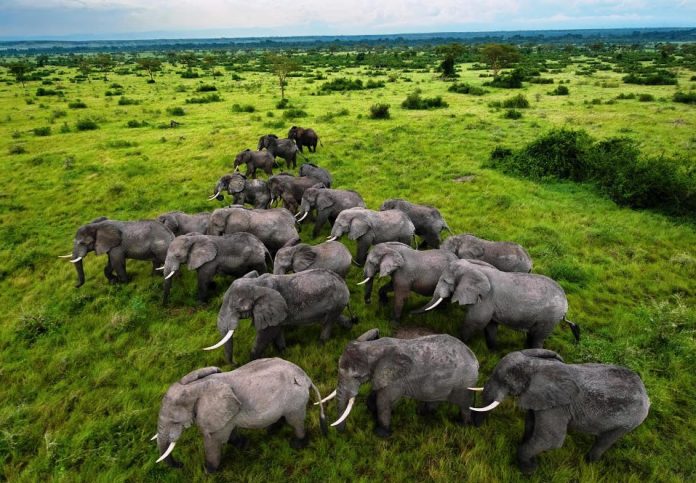Queen Elizabeth National Park is one of Uganda’s oldest parks. Formerly called ‘Kazinga National Park’, this world biosphere reserve was renamed in 1954 to “Queen Elizabeth National Park” in remembrance of Queen Elizabeth II of Great Britain who visited the park and Uganda in the 1950s.
Queen Elizabeth National Park lies on the floor of Africa’s Western Rift Valley, which runs from northern Uganda to Malawi. It is one of the most popular Ugandan national parks hosting a diverse flora and fauna. It is one of the places that you can’t miss while taking a safari in Uganda and it offers great opportunities to those looking for big game safaris.
When it comes to wildlife, Queen Elizabeth National Park is the best popular game reserve for Uganda’s wildlife safaris. It goes as far as to the Rwenzori ranges in the North along the shores of Lake Edward to the remote Ishasha River in the south. It is composed of a variety of habitats ranging from savanna and wetlands to gallery and lowland forest. Crocodiles have been seen in the Kazinga Channel. They disappeared for some 8,000 years back after they were eliminated from Lake Edward by toxic ashes from local volcanoes.
Due to the lowland forests, the park is comprised of a variety of different bird species that bird watchers can never miss out to see as they watch wildlife. These are some of birds expected to find in the park; African Mourning Dove, Grey-headed Kingfisher, Swamp Fly-catcher, Grey-capped Warbler, The beautiful Black-headed Gonolek, Collard Pranticles, Pin-tailed Whyda Martial Eagle, Gabon and Slender-tailed Nightjars,Great and Long-tailed Cormorants, Black-rumped Buttonquail, Common Squaco Heron, Shoebill Stork, African Open-billed Stork, African Fish Eagle, African Jacana, Malachite and Pied Kingfishers, African Skimmer, Verreaux’s Eagle-Owl, Black Bee-eater, White-tailed Lark, White-winged Warbler, Papyrus Gonolek, Papyrus Canary,Great white and Pink-backed Pelicans,White-winged Terns.
While on a launch cruise along the Kazinga channel, water birds species such as; Great-white and Pink-backed Pelicans, Great and Long-tailed Cormorants, Common Squaco Heron, African open-billed Strok, White-faced Whistling and Knob-billed Ducks, African Fish Eagle, Black Crake, African Jacana, Water Thick-knee, Spur-winged and African Wattled Plovers, Malachite and Pied kingfishers, Swamp flycatchers and Yellow backed Weavers are all common.
Queen Elizabeth National Park is basically known for the big four animals that is the Elephants, Lions, Buffaloes and the Leopards. Other animals in the park include warthog, giant forest hog, topi, bush babies, chimpanzee, baboon, Columbus monkeys and hippos. In other words, Queen Elizabeth National Park contains 95 species of mammal. Hippos are efficient lawn mowers. They prefer to graze short grass, each animal eating about 40kg each night.
Game drives are usually done very early in the morning and late in the evening hours. These are usually done very early in the morning and late in the evening hours. Over 200km of well maintained tracks give visitor access to the park’s game and slower you drive the more you will see. Some tracks pass through large mating grounds of great herds of Uganda Kob. There are basically three game drives in Queen Elizabeth national park including: The Northern crater area game drive, Kasenyi area game drive and the Ishasha sector game drive. All these places make Queen Elizabeth a best place for wildlife which varies from day to day for all kinds of tourists
Habituated Chimpanzees live in the 100m deep gorge carved by the Kyambura River that flows across the rift valley floor towards the Kazinga Channel. Guided nature walks to search for Chimpanzees start at Kyambura’s fig tree camp.




























